Morocco earthquake: Australian woman relives moment she thought she would die
An Australian woman on holiday in Morocco during the worst earthquake on record has relived the terrifying moment she thought she was going to die.
Vanessa, 33, was ten days into her three-week trip with tour group Intrepid Travel when the group of seven reached Ait Ben Haddou – a UNESCO heritage site at the foot of the High Atlas Mountains, southwest of Marrakech, on Friday.
It was about 11 p.m.—Vanessa was sitting in bed reading in her pajamas while her roommate was on the balcony on the phone—when the air conditioner on the wall started growling.
“Then it was like thunder from the ground, rumbling and the whole building started shaking,” she told Daily Mail Australia.
“The hotel was made of traditional hay and mud, and the ceiling was made of thatch and they all started falling, the hanging lights were swaying very violently and I realized it was an earthquake.”
Vanessa, a graphic designer from Sydney, later discovered she was staying about 30 minutes from where the magnitude 6.8 earthquake occurred. The death toll was about 2,800 on Tuesday, but that number is expected to rise.
Vanessa (pictured) went on a trip to Morocco about ten days before a magnitude 6.8 earthquake occurred
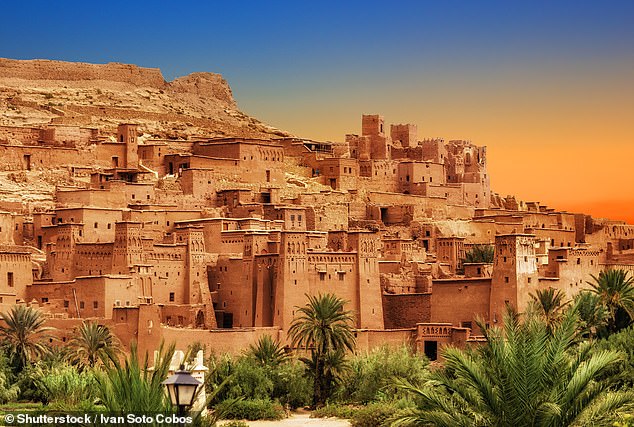
She was staying in Ait Ben Haddou (photo before the disaster), at the foot of the Atlas Mountains, on Friday when the earthquake struck
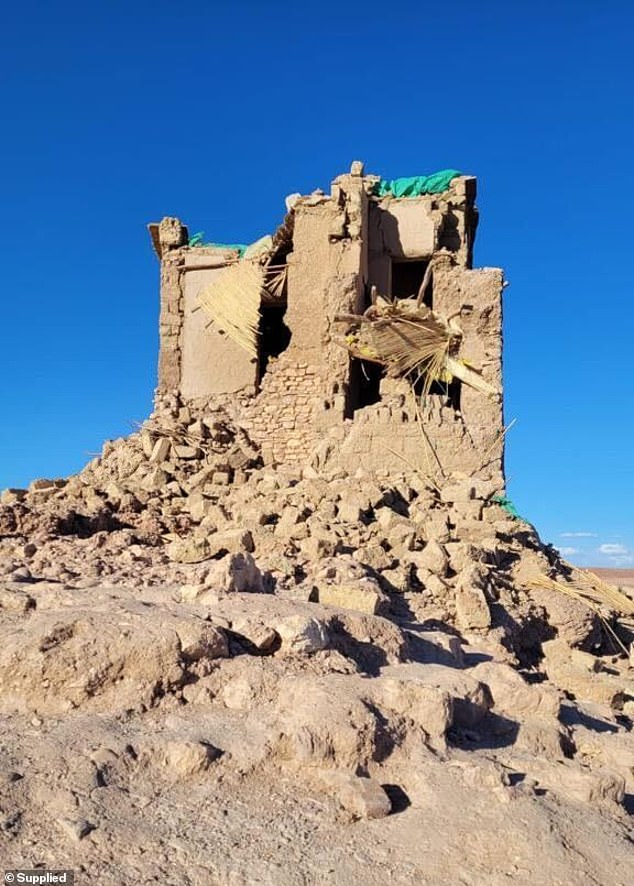
In the photo: a building in Ait Ben Haddou that was severely damaged during the earthquake
To make matters worse, the links on the Australian Department of Foreign Affairs and Trade website were broken, so she couldn’t mark herself as safe. “I tried Googling different things, but you could only tell them if you were in Ukraine,” she says. added.
Moments after the earthquake started, the power went out and Vanessa had to feel her way across the room to reach a door frame as the floor shook and pieces of the ceiling fell on her head.
“I kept trying to turn on the flashlight on my phone, but I was shaking and kept turning on my debit card instead,” she recalls.
‘I braced myself against the door frame, but the door didn’t stop and I thought: If this goes on for another ten minutes, I could die here; the building will collapse.’
She opened the door and saw two young American women standing in the hallway in a panic, asking what was going on.
“I said, ‘Earthquake! We have to get out of the building, but stay in the doorways,’ and then a man came running and shouted, ‘Run! Everybody get out!’ and that was enough for me,” she said.
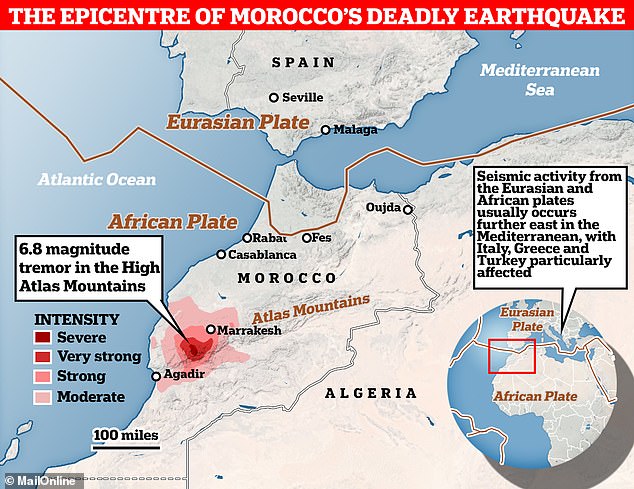
Where the earthquake struck: This map shows the epicenter of the deadly earthquake in Morocco, which killed more than 2,500 people and injured thousands of others when it struck last Friday
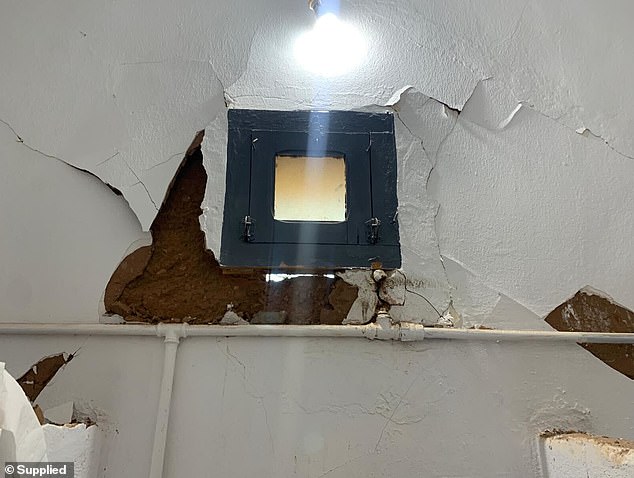
In the photo: cracks in the walls and missing plaster in the hotel where Vanessa stayed
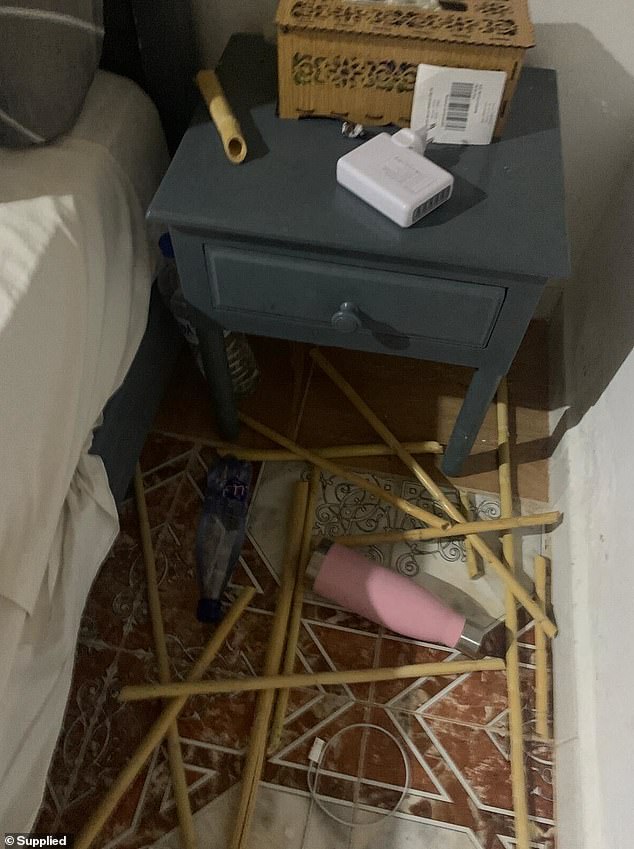
The hotel’s ceiling was made of reeds, which all fell to the ground during the earthquake (photo)
Once outside, hotel staff told them to run to the other side of the road where there were no structures that could fall and injure them.
Vanessa, still in her pajamas and without shoes, felt like she was on a boat.
“I felt everything still moving, but I didn’t want to say anything and panic everyone, but it turned out the ground was still moving – the aftershock was a magnitude 3.5 earthquake,” she said.
The hotel staff ran in to grab chairs from the restaurant and, to Vanessa’s surprise, served mint tea to everyone on the side of the road.
At one point they met a woman who was hysterical because she lived a few kilometers away in a house that had been badly affected by the earthquake – where people had died.
Their bus driver was staying with his family about two miles away, but could not reach them because the roads were blocked.
They also couldn’t get back inside the hotel because the building was unstable, so around 2:30 a.m. the group boarded a minivan to try to get to sleep.
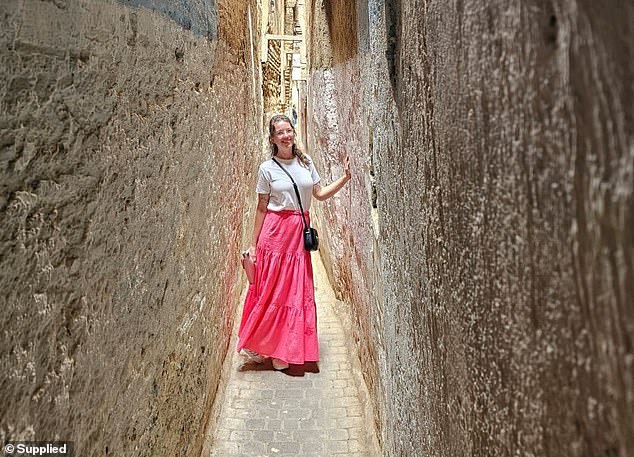
Vanessa (pictured), a graphic designer from Sydney, found herself staying about 30 minutes from where the magnitude 6.8 earthquake occurred
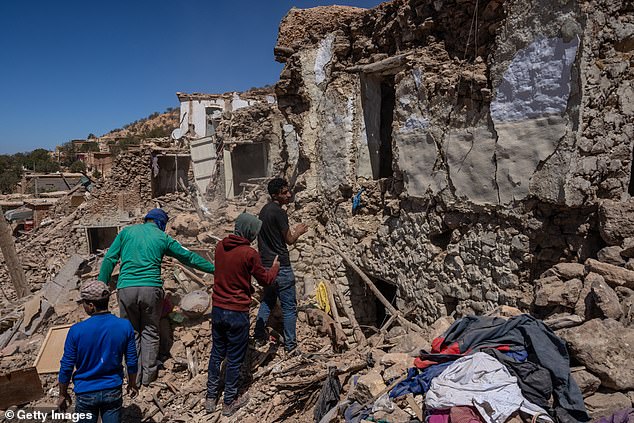
In the photo: Men search a destroyed building in Douzrou on Monday
“I couldn’t sleep so I kept reading, but I kept thinking everyone was moving around and shaking the van, but no, it was the aftershocks,” she said.
“The van was rocking back and forth all night.”
The group was supposed to go to the High Atlas Mountains – the heart of the disaster – within days to hike and stay with a local family, but that was impossible after the earthquake.
Instead, the guide drove the group to the coast, where the landscape was flat and the towns remained largely untouched for the remaining days of their journey.
However, they will have to leave the capital Marrakesh.
The main population suffered extensive damage, with many forced to sleep on the streets due to complete destruction or severe structural damage to their homes.
“I’m afraid to go to Marrakech because there is a lot of damage there and it feels strange to be on holiday among people who are now homeless,” she said.
Despite having to deal with death, Vanessa said she doesn’t regret booking the trip.
“I don’t want to be hit by another earthquake, but you have no control over these things,” she said.
She said Intrepid Travel guides were extremely helpful and worked around the clock to book emergency accommodation, provide free meals and ensure the group was safe.
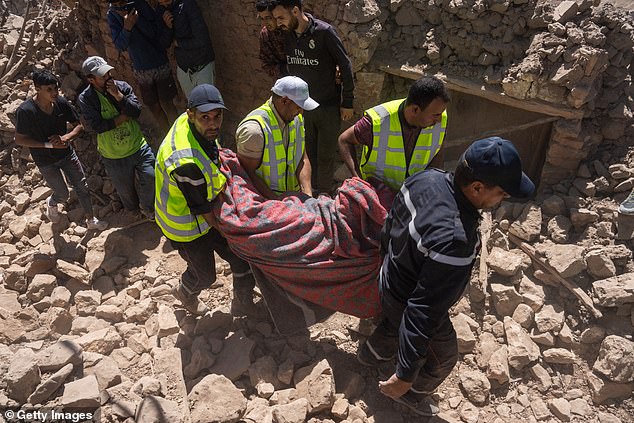
The body of a 30-year-old man is recovered from the rubble in Douzrou, Morocco on Monday
